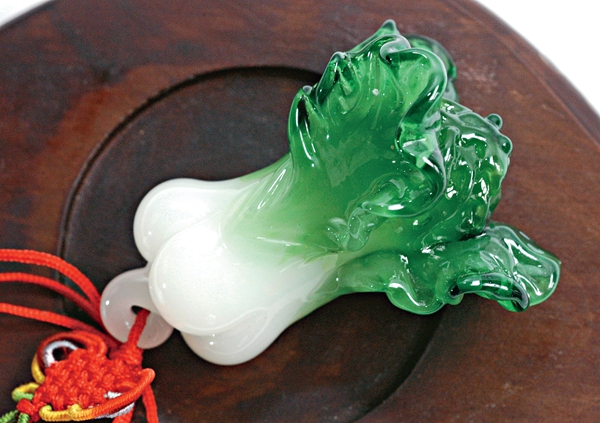
"Colored glass crafts are as crystal as ice, so pure that they never get stained with dust." The beauty of glass crafts is revealed in Ode to Glass Crafts, a poem written by Yuan Zhen, a poet during the Tang Dynasty (618-907). Beijing is renowned for its production of glass crafts. Through the exquisite works of art, which embody Beijing's distinct cultural features, one may not only get a glimpse into the residents' aesthetic tastes and spiritual pursuit, but also have a better understanding of the residents' folk customs and traditional ideas.
For hundreds of years, glass crafts have been used as ornaments in China. Potted flowers, made from glass during the Qing Dynasty (1616-1911), have been housed in the Palace Museum (in Beijing) for many years.
From the Qing Dynasty to the Republic of China (1912-1949), the most common glass crafts were potted flowers, snuff bottles, and various knickknacks. After the People's Republic of China (PRC) was founded in 1949, craftspeople began producing various items of high practical value, including buttons, corsage flowers and cigarette holders.
Among all the glass crafts nationwide, the ones made in Beijing stand out, especially in terms of their gorgeous colors and indigenous modeling. The exquisite artworks have been favored by countless people from both home and abroad.
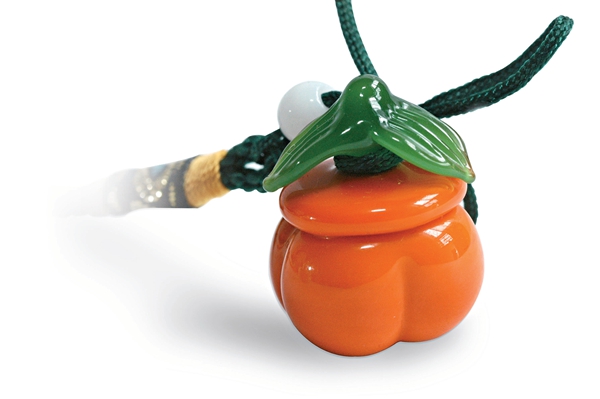
After more than 600 years of development, the craft of creating Beijing's glass crafts has been passed down to the seventh generation. In 2008, the craft was added to the national intangible cultural heritage list.
Liu Yu is the seventh-generation inheritor of the craft. When he was a little boy, he learned how to create glass crafts from his mother, Xing Lanxiang, who is the only master (of the craft) alive today. For more than 10 years, Liu has devoted himself to his beloved career, and has exerted every effort to protect and promote the time-honored craft. Every year, he creates more than 1,000 glass artworks in his studio, in Baigongfang Crafts Museum (in Dongcheng, a district in Beijing).
Long History
The history of creating Beijing's glass crafts can be traced back to the early Ming Dynasty (1368-1644). It is said that when ancients smelted bronze and elixir, they discovered some waste materials formed beautiful colors. Then, they began to use the materials to make crafts. That was the embryonic form of glass craft.
During the Ming and Qing dynasties, glass crafts were mainly used as ornaments for the royalty and nobles. During the Qing Dynasty, glass beads, in different colors, were used to decorate the hats of officials with different ranks. During the reign of Emperor Kangxi (1654-1722, fourth emperor of the Qing Dynasty), the emperor ordered the Ministry of Works to set up an imperial workshop, in then-Beijing Liulichang (Factory of Colored Glaze), to make glass crafts specially for the royal family. Therefore, glass crafts are also referred to as "imperial crafts" and "royal colored glazed products."
After the decline of the Qing Dynasty, craftspeople began creating glass crafts for common people. Four big families (in Beijing) were renowned for their production of glass crafts with distinctive local features. The families created thousands of kinds of crafts, ranging from daily ornaments (such as jewelry) to ornamental crafts, in the shapes of birds, animals, flowers, fruits and human figures. The imitations of jade articles (made from glass), created by several master artists, were so excellent that one could hardly tell the difference between the glass crafts from the jade articles.
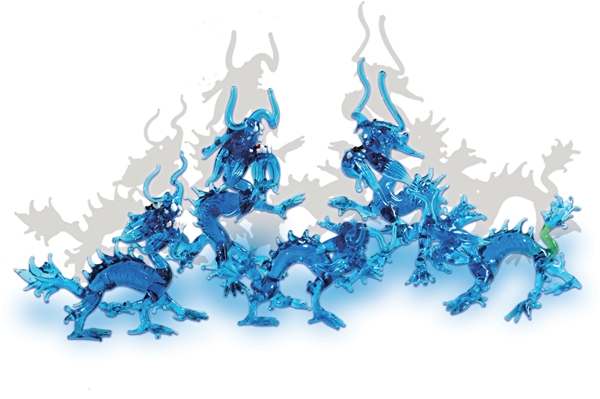
After the founding of the PRC, the Chinese Government invested enormously in Beijing's glass crafts. Old glassware artisans were brought together and a factory was set up (in Beijing) to make decorative glass crafts. Those crafts became the leading export products at the time.
Liu's studio is at the original site of the factory's workshop. His mother told him she was the youngest artisan in the technical department, when she began working at the factory. At that time, freight cars lined up outside the factory to buy glass crafts. During his visits to the factory, then-Premier Zhou Enlai asked the workers (with the factory) to make exquisite products, through which more people worldwide would better understand the beauty of Chinese glassware crafts.
However, due to various reasons (including the shortage of raw materials, the factory's structural reform and the changes in consumers' aesthetic tastes), the craft gradually declined. Today, only a few artisans know the tricks of the trade.
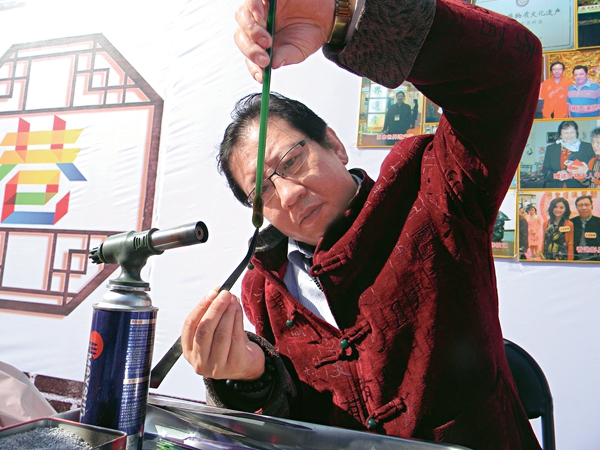
Exquisite Workmanship
Beijing's glass crafts are made by sculpting glass in fire. A craft has to be created at one go, which requires an artisan to master superb skills. The artisan should be fully-prepared before he/she begins working. The image of the product to be made, the temperature of the fire …, everything in the whole process relies heavily on the artisan's skills.
The main material is the glassware stick, also called the low-temperature lead glaze. No mold is used throughout the process of making a glass craft. The artisan uses scissors and tweezers to sculpt or twine a glassware stick, which melts in fire to whatever shape he/she desires. In the twinkling of an eye, a crystal, lovely craft is made.
In Liu's eyes, those seemingly easy steps are energy-consuming. He believes an artisan should work hard to gain more experience (in life), and enjoy studying artworks' rich cultural implications, so he/she can design wonderful images (of glass crafts). A glass craft must be created within 40 minutes after the fire ignites the stick. Otherwise, the material will become unusable. Behind the seemingly simple steps is Liu's meticulous, decades-long practice.
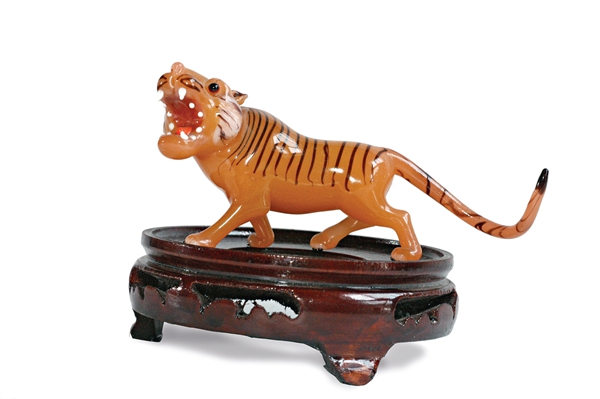
Passing on a Cultural Inheritance
As the inheritor of the craft (of creating Beijing's glass crafts), Liu believes his most important task is to pass on the craftsmanship of his previous generation to the future one. Being the only full-time practioner of the craft makes him feel worried and anxious, as he strives to fulfill his commitment to popularize the traditional craft.
"At present, Beijing has three inheritors (of the craft): My mother, my younger brother and me. My mother, who is in her 70s, has retired from society. My brother, who has a job, can hardly find time to make crafts. So technically speaking, I'm the only one dedicated to studying and developing the craft," says Liu.
Liu adds that his studio receives many orders for customized glass crafts every year. Compared with many other intangible cultural products with few buyers, Beijing's glass crafts are quite a success.
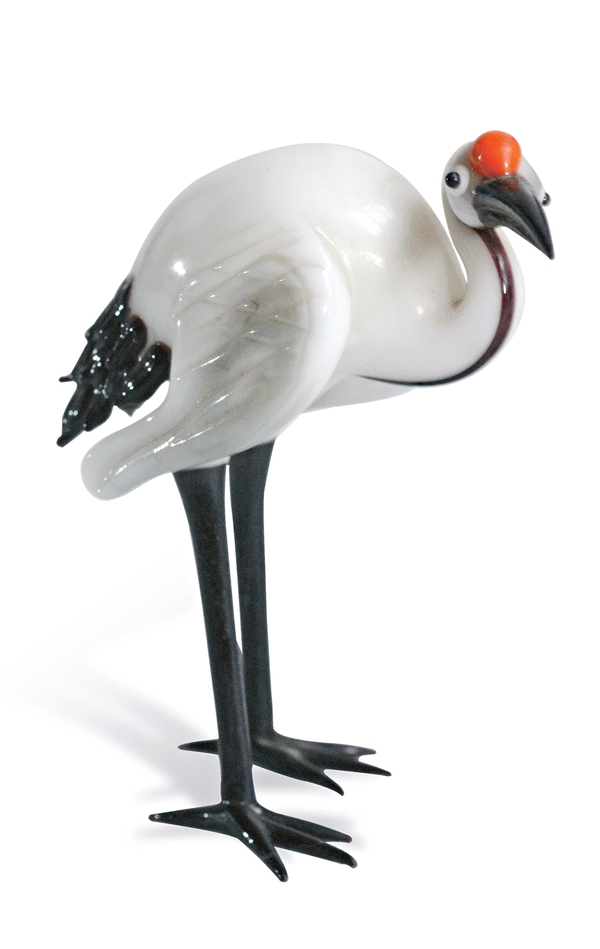
However, few people are willing to study the craft these days. Why? It takes a lot of effort, there is a shortage of glassware sticks, and the artisans receive very little pay for their crafts. As a result, there are few successors to the traditional Chinese craft.
Liu is delighted that given the government organizations' tremendous efforts to protect the craft in recent years, the intangible cultural heritage has had more market opportunities.
To pass on the craft to the next generation, Liu has taught many apprentices, including his daughter, how to create glass crafts. Liu also invites netizens, who are interested in the craft, to visit his studio. Liu also asks the netizens to make DIY (do-it-yourself) crafts.
Photos Supplied by Liu Yu
(Women of China English Monthly December 2022 issue)